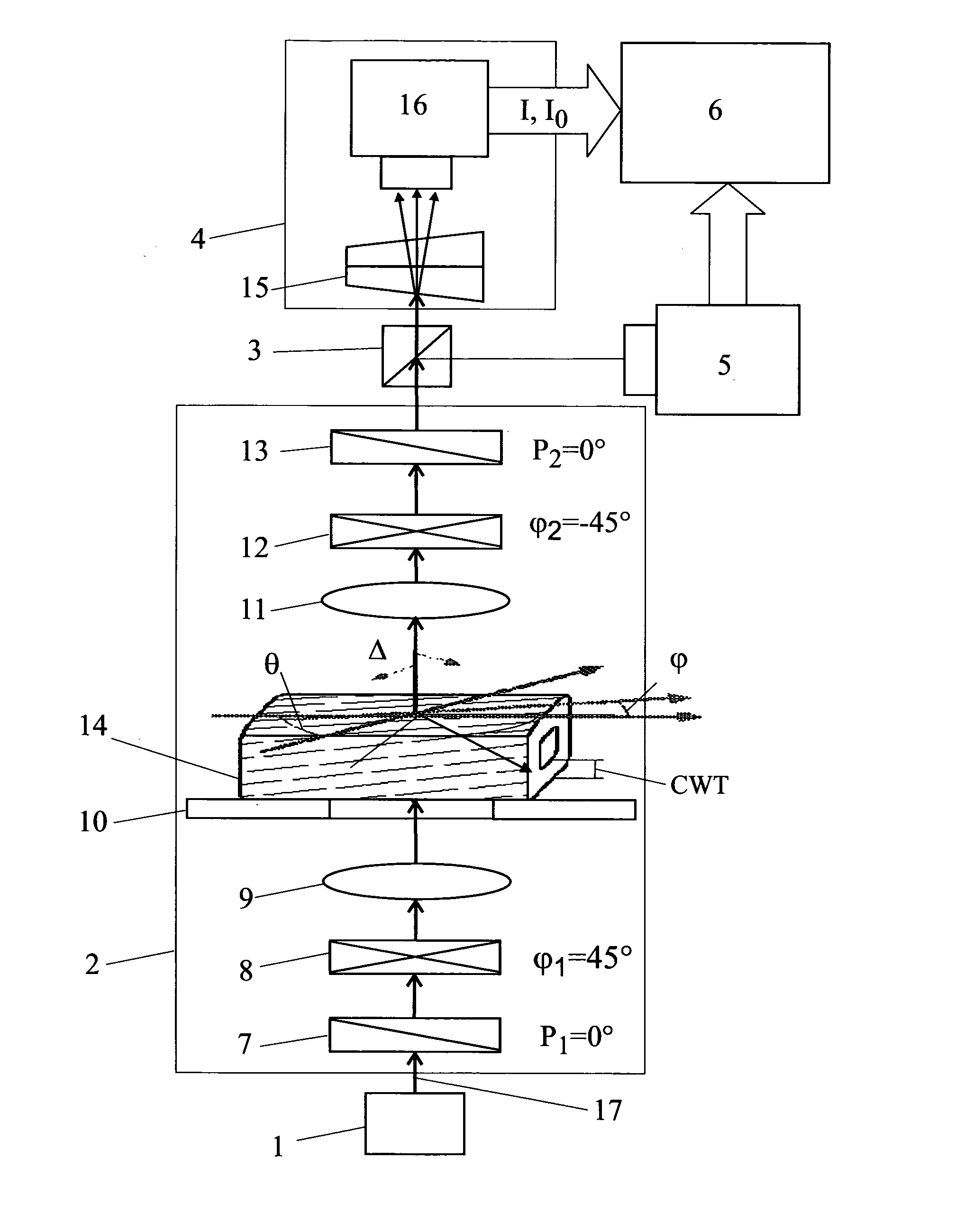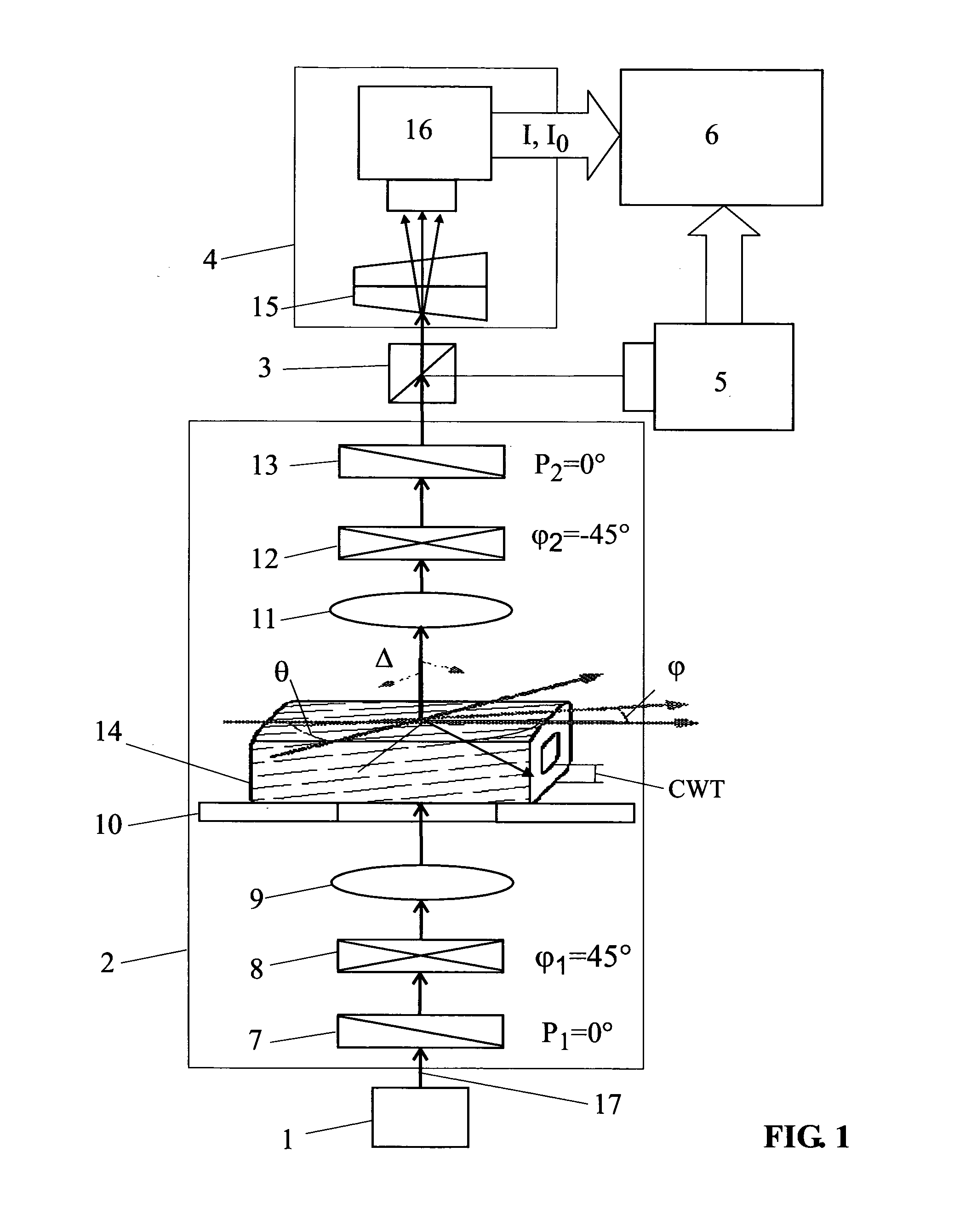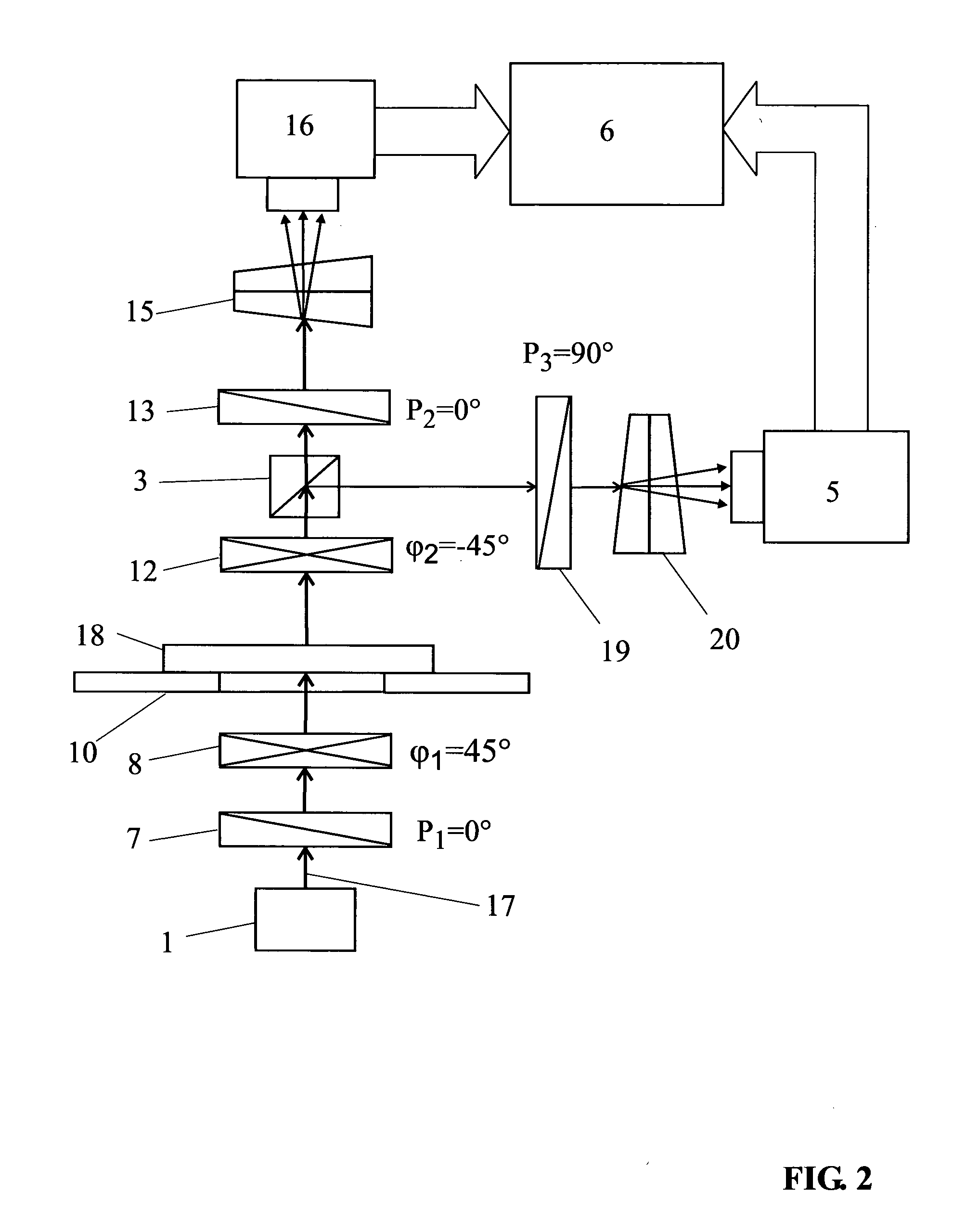Method and equipment for measurement of intact pulp fibers
a technology applied in the field of methods and equipment for realtime or online measurement of intact wood or pulp fibers, can solve the problems of difficult measurement of mfa and cwt, limited measurement speed, and tedious and only applicable first three techniques
- Summary
- Abstract
- Description
- Claims
- Application Information
AI Technical Summary
Benefits of technology
Problems solved by technology
Method used
Image
Examples
example 1
[0040]The first example is a measured pine kraft pulp fiber. As an example, FIG. 3a shows the image of this fiber 22 at θ=90°, with a narrow rectangle window 23 added, which schematically illustrates the position of the ImSpector's scanning slit at the sample's plane. The image part inside the window 23 was scanned by the ImSpector and dispersed into spectral intensity distribution (spectral image) as shown by FIG. 3b. The spectral image contains the line pixels in spatial axis 24 and spectral pixels in spectral axis 25. The value of wavelength λ of the spectral axis 25 is ascending in the marked direction. A small area 26 at the central region of the scanned fiber segment in the window 23 was selected for measurement and the light intensity of the area 26 is I. The dispersed spectral image from the segment 26 of intensity I is a narrow rectangle fringe 27 in FIG. 2b showing the intensity spectral distribution of I, i.e. I[Δ(λ),φ]. A small rectangle area 28 of the background image n...
example 2
[0042]The second example was a birch kraft pulp fiber. As an example, FIG. 6 shows the real image (FIG. 6a) of this fiber 33 at θ=45° with an added window 34 illustrating the position of the ImSpector's scanning slit at the sample's plane. A segment 35 of intensity I of the fiber 33 was selected for measurement and its dispersed spectral image is the narrow fringe 37 in FIG. 6b, i.e. I[Δ(λ),φ]. A small area 36 of the background image near the fiber segment 35 in FIG. 6a was used as reference with the light intensity I0. The reference image 36 of I0 was dispersed into a narrow rectangle fringe 38 in FIG. 6b, which describes the spectral distribution of I0(λ). In the spectral image of FIG. 6b, the line pixels are presented in spatial axis 39 and the wavelength λ values are specified in spectral axis 40.
[0043]The measurement results of the fiber segment 35 in FIG. 6a for Δ and φ as a function of the fiber's orientation angle θ are presented in FIG. 7a and FIG. 7b, respectively.
PUM
| Property | Measurement | Unit |
|---|---|---|
| wavelength range | aaaaa | aaaaa |
| angle | aaaaa | aaaaa |
| phase retardation | aaaaa | aaaaa |
Abstract
Description
Claims
Application Information
 Login to View More
Login to View More - R&D
- Intellectual Property
- Life Sciences
- Materials
- Tech Scout
- Unparalleled Data Quality
- Higher Quality Content
- 60% Fewer Hallucinations
Browse by: Latest US Patents, China's latest patents, Technical Efficacy Thesaurus, Application Domain, Technology Topic, Popular Technical Reports.
© 2025 PatSnap. All rights reserved.Legal|Privacy policy|Modern Slavery Act Transparency Statement|Sitemap|About US| Contact US: help@patsnap.com



